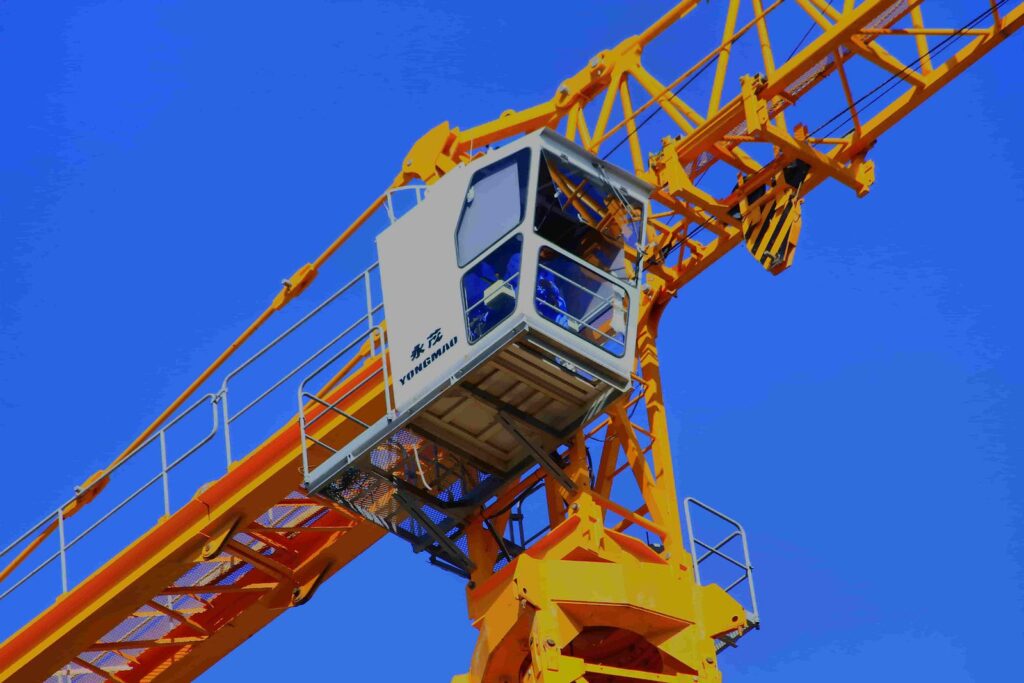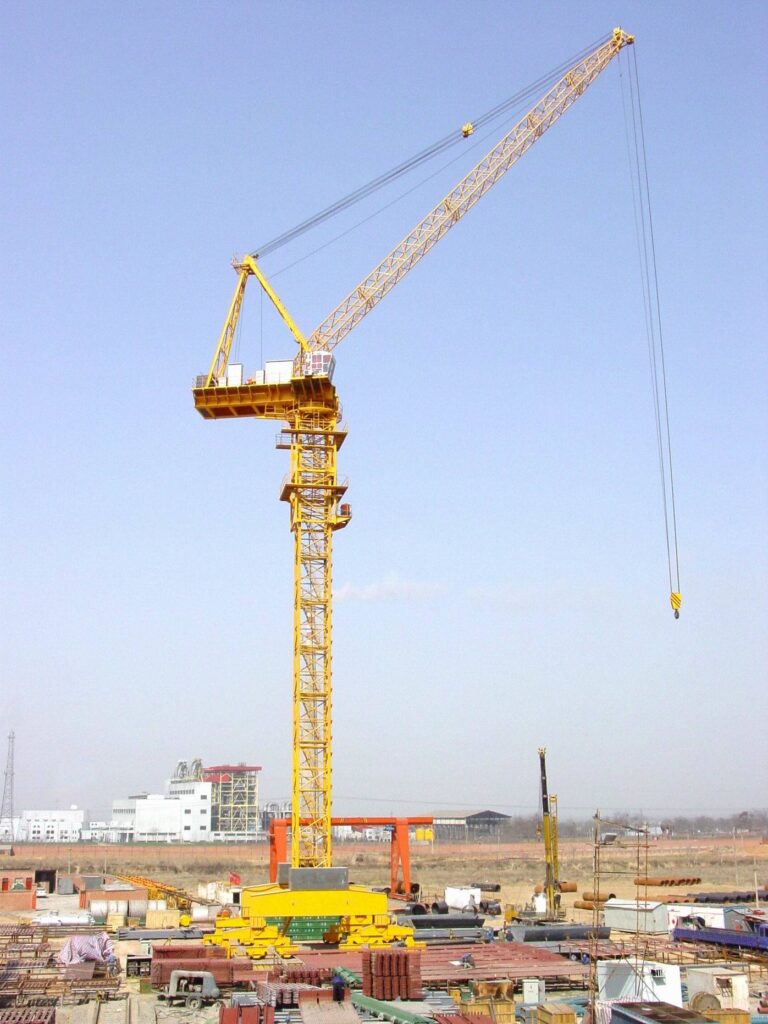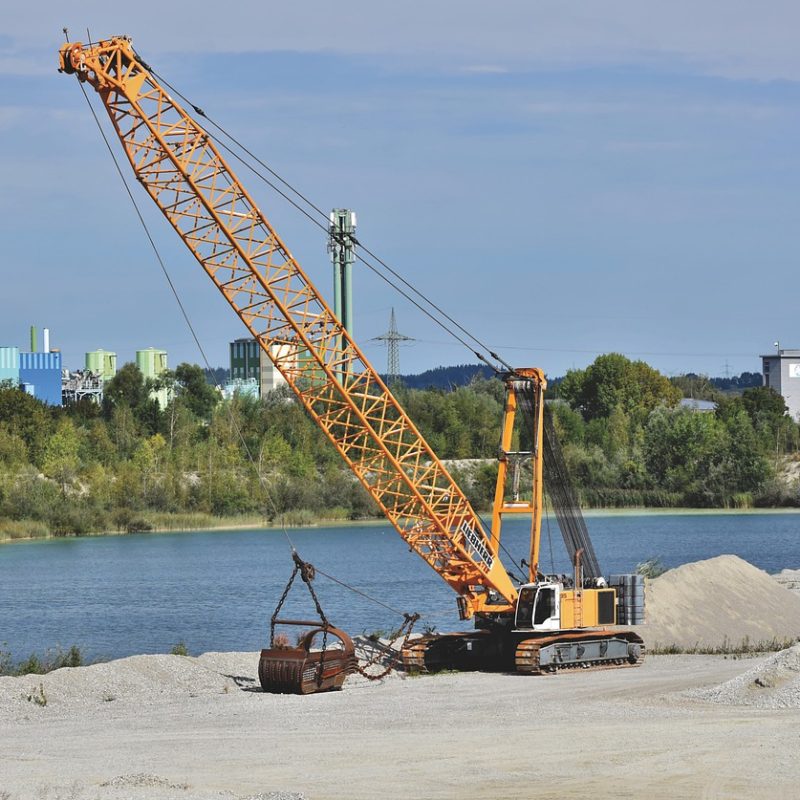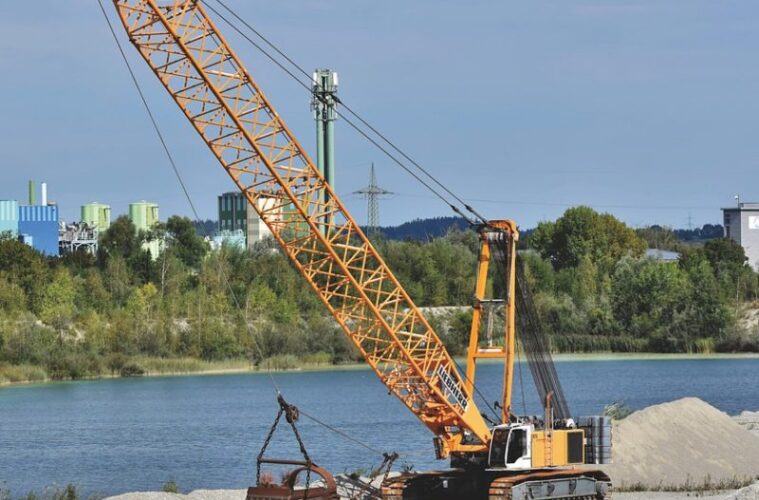Ah, the crane, the national bird of many cities and skylines the world over. Of course, we’ve all seen them. Anytime there’s a major construction project there are cranes working overtime to move heavy pieces to new places, and major projects need cranes. The fact is many constructions couldn’t be done without them. So let’s take a look at the crane, its history, and what it’s made of.
What is a Crane?

source: pinterest.com
Cranes are a type of modern machinery used for lifting and lowering materials and moving them anywhere within a circular radius. Typically this is done through a combination of wire ropes and chains, but in the past ropes were often used to great effect. Organised into a pulley system, these devices are capable of lifting incredibly heavy loads and are typically used in construction, but also in the loading and unloading of freight and cargo containers from ships and onto trains and trucks.
A Bit of History

source: pinterest.com
The crane dates back thousands of years, with the first known crane called the shaduf, known to have existed as early as 3000 BCE. Although this was mostly just a water-lifting device, it eventually migrated to Egypt where it would be used to help build pyramids, eventually evolving into the Greek and Roman Trispastos (Three-pulley-crane) and Pentaspastos (Five-pulley-crane), capable of lifting loads of 150kg and 450 kg respectively. This would eventually evolve into the 10.4m tall Roman Polyspastos. Powered by a treadwheel, this device could lift weights of over 3,000 kg, some designs could lift over 6,000 kg! This technology would be lost when the Roman Empire fell, but eventually in 1225 the treadmill crane reappears in French sources, by then a mainstay of castle construction, and eventually evolve into the modern cranes of today.
Anatomy of the Crane
Most cranes – historic and modern – operate on a fairly simple basis. Beginning with a stable platform or base, this part of the crane is often designed to withstand or spread the weight of a load. This is also typically where the machine is operated from. The next part of the crane is a long beam or a large, lengthy boom along which the rope, wire or chain is suspended. The third part is the hook, typically attached to a hoist winch, which is attached to the load. Many cranes also have segmented struts to allow for a certain amount of bend and articulation, and may have additional ropes and chains to better disperse the weight and assist with lift. However, not all cranes are alike, and there are many varieties and specialisations even within the technological marvel of pulleys and levers that is the crane.
Types of Crane

source: pinterest.com
Today there are more than 19 types of crane, and crane sales for many of these models are not inconsiderable. Below we’ve listed a few the most common designs of crane in use today.
Truck Mounted Crane: The most basic of mobile cranes, the truck crane was invented in 1947 and have a lifting capacity of between 14.5 short tons and 2240 short tons.
Rough Terrain Crane: The Rough Terrain crane is a dedicated vehicle with a telescopic crane with robust wheels.
Crawler Crane: With large tank-like treads, this crane is excellent in terrain that would be impassable for most other designs. It has a lifting capacity of between 44 and 4480 short tons.
Floating Crane: The floating crane is typically used for bridge building, port construction, or transferring freight from a ship. Mounted on a pontoon or barge, these cranes normally have a lifting capacity of over 10,000 short tons.
Reach Stacker: A specific design of crane for lifting and organising cargo contains.
All-Terrain Crane: A hybrid of a truck-mounted crane and a rough-terrain crane, they are typically designed with a lifting capacity of up to 2,205 short tons.
Pick and Carry: Similar to a mobile crane, these light and mobile cranes have a carry capacity of between 11 and 44 short tons.
Sidelifter: another truck based crane, this one is specifically designed to lift containers from ground level onto railway vehicles.
Carry deck: A small, 4-wheeled crane with 360 degrees of rotation, it is designed to be used in confined spaces and to carry loads short distances.
Telescopic Handler: A combination of a crane and a forklift, these cranes are typically used to handle pellets and bricks on building sites.
Harbour Cranes: Serving the same general function of the floating crane but set into a a fixed location.
Travel Lift Crane: Often called a boat gantry crane, this is a crane with two panels joined by a single beam. These cranes are used to transport boats, particularly those with masts that would otherwise be difficult to move.
Railroad Crane: A type of crane mounted on railroad tracks, designed for maintenance work, recovery operations and moving freight.
Aerial Crane: Often called sky cranes, these are a type of crane built into a helicopter and are able to reach exceedingly high places and other areas considered inaccessible to most cranes.
Ring Crane: Mounted upon a concentric ring, this crane is fixed into a location and capable of lifting loads of up to 5000 tons across incredibly long distances.
Tower Crane: The crane most are familiar with, this crane is mounted upon a tall tower with an operating cabin at its top, and a beam that crosses left and right across, creating the appearance of an oversized “T”.
And of course there are many others, with the overhead crane, hydraulic crane and level luffing crane just to name a few.
With all the variety in both cranes and their functions, there is no such thing as a one-size-fits-all crane. Crane operation is a specialised field, one that requires considerable training, but when it comes to lifting and moving heavy loads, nothing else compares.



